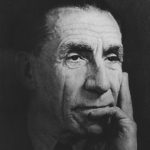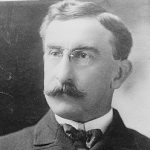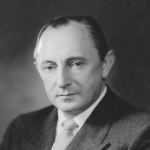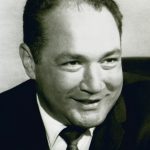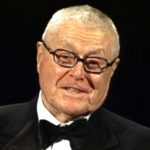Harry Arminius Miller almost single-handedly established the course and credibility of American automobile racing. In 1894, at the age of 19, the restless and strong willed Harry Miller left home and moved to Los Angeles to become a foundry foreman. With the aid of a used lathe and drill press and a few essential tools, he began production on an original design for an improved carburetor. From his designed and patented carburetors he founded the Master Carburetor Company, for the manufacture and sale of a new and very different carburetor. Early in 1912, Miller had developed – with carburetors in mind – an original blend of aluminum, nickel and copper, which he called Alloyanum. Miller also found that it made marvelous pistons and by late 1913, he began pioneering their sale. These pistons led to the formation of the Harry A. Miller Manufacturing Co. and the first original Miller engine was commissioned in 1915. It was an inline 6, single overhead-cam aircraft engine. The business evolved to build racecars designed and manufactured in the Miller factory. One of the engines was placed in what remains to this day as one of the most dramatic racing cars of all time: the Miller Golden Submarine. Designed and built in 1917, the entirely enclosed and aerodynamic racecar caused a sensation wherever it went. The creations of Miller were raced on board tracks, brick tracks and dirt tracks and were utterly dominant in their day, holding a wide variety of speed records. Miller, alone, and with Offenhauser won the Indianapolis 500 fifteen times in the twenty-year period from 1921 to 1941. In those days, if a driver wanted to win, he’d better be behind the wheel of a Miller. Between 1926 and 1929, three quarters of all cars on the Indy starting grid were Millers. Just weeks before the stock market crash of 1929, Harry Miller retired from his business. A year later, he set up a new engineering company, hiring back old staff. But the world had changed from the Twenties. With the Depression came little money for racing. In three years, Miller would be bankrupt. Miller moved to New York, where he met up with Preston Tucker. Tucker felt that a stock-block engine in a modern, independently sprung chassis might have a chance to win. In 1935, Tucker pitched the idea to Ford and a deal was struck with Miller to construct ten cars for the upcoming Indy 500, at a cost of $75,000. But due to the late arrival of machines and other equipment, it did not leave much time to build and test the cars. The inevitable happened, and of the ten cars built, only four qualified and those four retired early from the race. That may have destroyed the relationship between Ford and Miller, but what remained were the most beautiful American racing cars of the decade. In the late 1930’s, Miller was asked to construct cars suitable for Grand Prix and Indy competition for the Gulf Oil Company. Miller accepted this as his last great effort of his career. The extremely complex car was rushed to completion and failed to qualify for the 1938 Indy. His last failures, however, could not overshadow his engineering genius and his influence on racing technology and the careers of countless engineers. Miller continued to design concepts and various aircraft projects until his death in 1943.
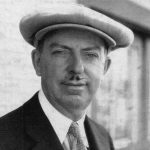
Harry A. Miller
Inducted 2003
read more
Learn More
- Wikipedia
